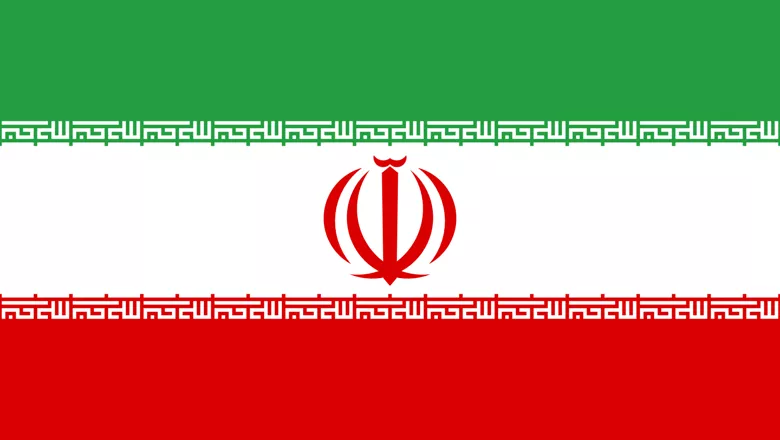06 July 2018
Latest report of the UNSG on UNSCR2231: its nuclear- and ballistic missile provisions
On 12 June 2018 and following the United States withdrawal from the Joint Comprehensive Plan of Action (Iran Nuclear Deal) on 8 May 2018, the UN Secretary General released his fifth report on the implementation of Security Council Resolution 2231 (2015). The UN Secretary General is required to report to the Security Council on the implementation of the resolution every six months. Therefore, this 5th report provides an assessment on the implementation of the resolution since the issuance of the 4th report on 8 December 2017.

Key Findings included:
- 13 new proposals submitted through the Procurement Channel bringing the total number of submissions to 37
- 6 cases of illicit procurement activity, which would have required advanced approval by the UN Security Council
- Component parts of missile launches fired by the Houthis at Saudi territory were manufactured in Iran, and features of the missiles were consistent with the Qiam-1
Usage of the Procurement Channel
There were 13 proposals submitted through the Procurement Channel to participate in or permit activities with Iran for nuclear or non-nuclear civilian end uses. This figure is up from 8 proposals submitted in the previous reporting period and brings the total number of proposals submitted since Implementation Day (16 January 2016) to 37. Of these 37, 24 proposals have been approved by the Council, 3 have been disapproved, 7 have been withdrawn by the proposing state, and 3 are currently under review.
While more frequently used than in the first year, the number of submissions demonstrates that activity in the procurement channel remains quite low in comparison to expectations, and this is partly due to a lack of awareness by sellers, and in some cases national authorities of its existence.[1]
Procurement of Nuclear-related Dual Use Items
Information was submitted from 2 member states (the United Arab Emirates (UAE) and the United States of America about attempts by Iran to procure apparently-controlled dual-use items outside of the authorised channels Notably four shipments were seized by the UAE while in transit to Iran. The items involved 40 cylindrical segments of tungsten, 1 inductively coupled plasma mass spectrometer, 10 capacitors, and 1 titanium rod. As these materials are control list items governed by the Nuclear Supplier Group Guidelines of Nuclear Related Dual-Use Equipment, they would have required advanced approval by the Security Council in line with the provisions of paragraph 2 of Annex B of resolution 2231 (2015).
U.S. authorities informed the Secretariat that two commodities – carbon fibre and aluminium alloys again governed by the Nuclear Supplier Group Guidelines of Nuclear Related Dual-Use Equipment had been transferred to Iran over the last year without prior approval of the Security Council as would have been required for such items.
Iran responded to the accusation by stating that it was the responsibility of the exporting state to seek approval through the procurement channel. While this is true, the response negates the fact that Iran is required to issue end user certificates for all such items before they are imported to the country so that the Iranian government cannot claim that it was not aware of the imports. As such, the statements in the UNSGs report assert that Iran has violated UNSCR2231 and the JCPOA, albeit in a relatively narrow and technical way.
Ballistic Missile related transfers
In examining 5 of 11 ballistic missile launches (22 July and 4 November 2017, and 19 December 2017 and 5 and 30 January 2018) by Yemen’s Houthi rebels at Saudi territory, the Secretariat found that some component parts in the debris of launches had been manufactured in Iran. Specifically, the Secretariat found that the features of the 5 missiles examined are consistent with those of the Iranian Qiam-1 short-range ballistic missile.
This latter finding supports that of the UN Panel of Experts on Yemen in January 2018, which reported that the Borkan-2H short-range ballistic missile fired at King Khaled International Airport in Riyadh, Saudi Arabia, in November 2017 “was a derived lighter version, designed specifically by the manufacturers of the Qiam-1” missile.
The Secretariat further assessed that the logo on the jet vane actuators matches that of the Iranian entity Shahid Bagheri Industries (S.B.I.), an Iranian entity linked to composite rocket fuel and missile technology.[2] The Secretariat also observed that a printed circuit board was marked with SHIG 6081, where SHIG is an abbreviation for the Shahid Hemmat Industrial Group, reportedly responsible for Iran’s liquid fuelled ballistic missiles.
To read the full report, please click here. The next report of the Secretary General will be issued in December 2018.
[1] Paulina Izewicz, Assessing the JCPOA Procurement Channel, The International Institute of Strategic Studies, 29 March 2018, https://www.iiss.org/blogs/analysis/2018/03/jcpoa-procurement-channel
[2] Iran Watch, Shahid Bagheri Industrial Group, last modified 1 January 2009, https://www.iranwatch.org/iranian-entities/shahid-bagheri-industrial-group
